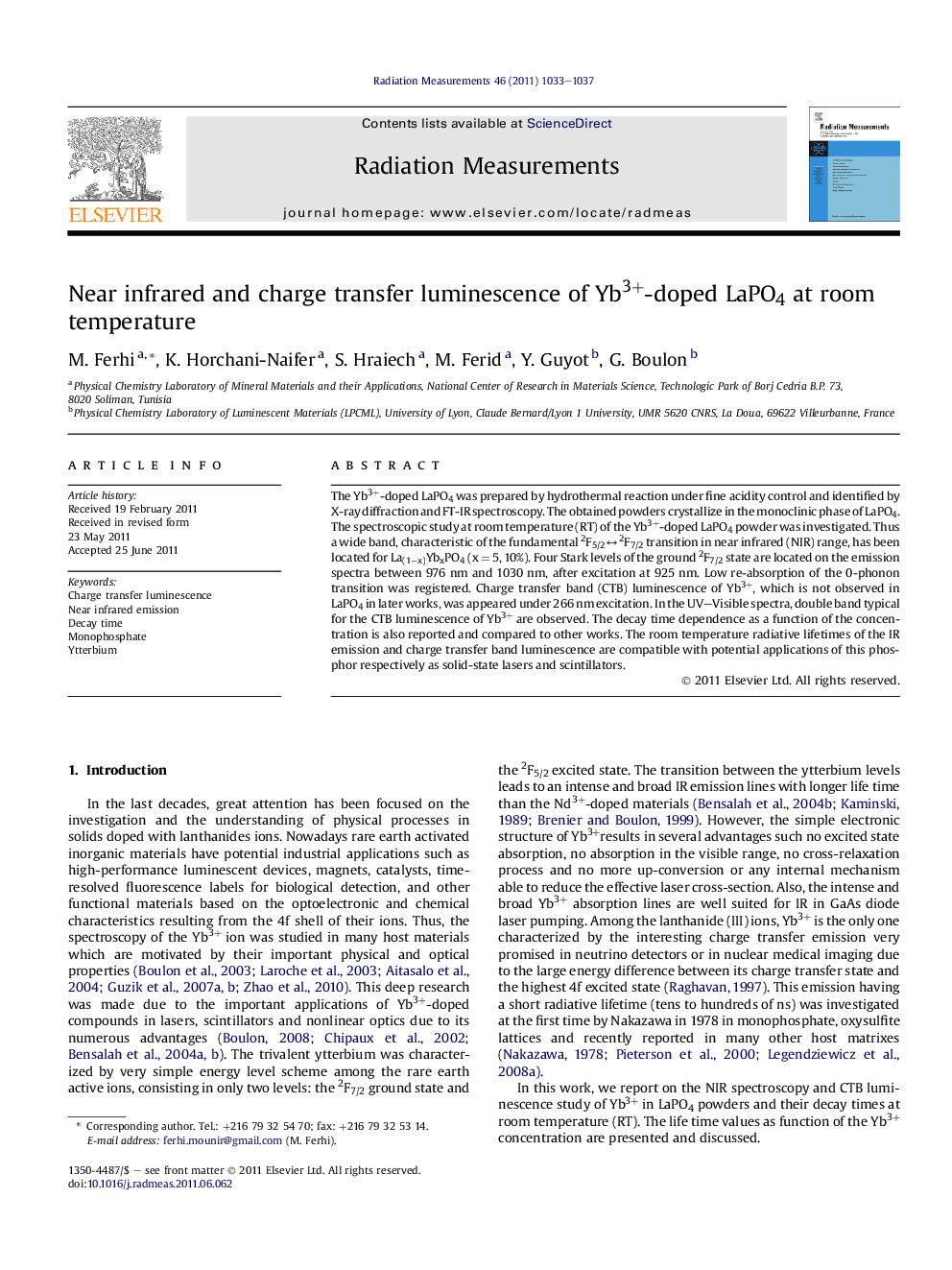| Article ID | Journal | Published Year | Pages | File Type |
|---|---|---|---|---|
| 1880900 | Radiation Measurements | 2011 | 5 Pages |
The Yb3+-doped LaPO4 was prepared by hydrothermal reaction under fine acidity control and identified by X-ray diffraction and FT-IR spectroscopy. The obtained powders crystallize in the monoclinic phase of LaPO4. The spectroscopic study at room temperature (RT) of the Yb3+-doped LaPO4 powder was investigated. Thus a wide band, characteristic of the fundamental 2F5/2↔2F7/2 transition in near infrared (NIR) range, has been located for La(1−x)YbxPO4 (x = 5, 10%). Four Stark levels of the ground 2F7/2 state are located on the emission spectra between 976 nm and 1030 nm, after excitation at 925 nm. Low re-absorption of the 0-phonon transition was registered. Charge transfer band (CTB) luminescence of Yb3+, which is not observed in LaPO4 in later works, was appeared under 266 nm excitation. In the UV–Visible spectra, double band typical for the CTB luminescence of Yb3+ are observed. The decay time dependence as a function of the concentration is also reported and compared to other works. The room temperature radiative lifetimes of the IR emission and charge transfer band luminescence are compatible with potential applications of this phosphor respectively as solid-state lasers and scintillators.
Graphical abstractFigure optionsDownload full-size imageDownload as PowerPoint slideHighlights► Hydrothermal synthesis of LaPO4 doped Yb3+ was reported. ► The obtained powders are characterized by different techniques. ► Near infrared (NIR) emission at room temperature of Yb3+-doped LaPO4 was registered. ► Yb3+ Charge transfer band (CTB) emission at room temperature was detected in LaPO4 doped Yb3+. ► Decay times of CTB and NIR emissions are registered.
